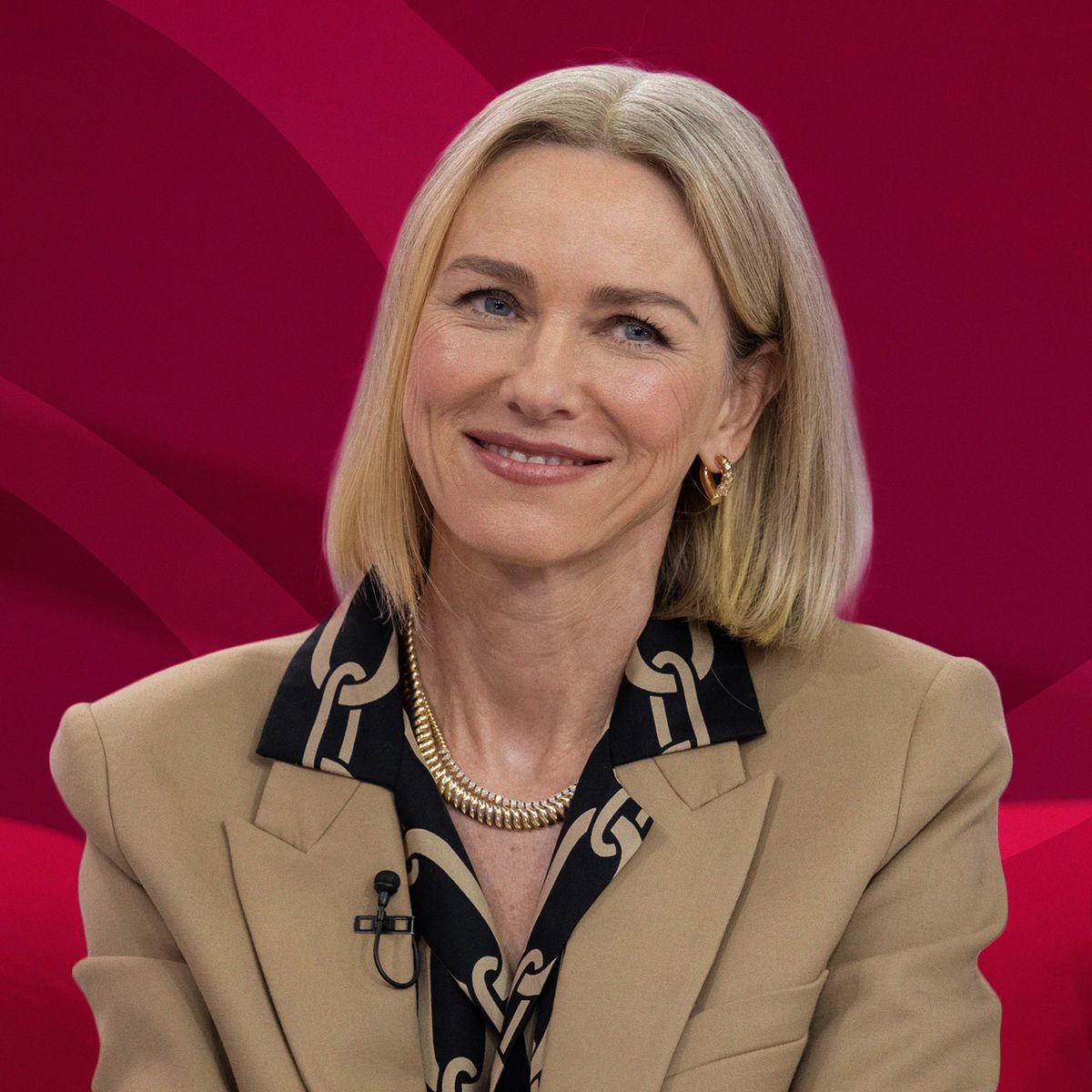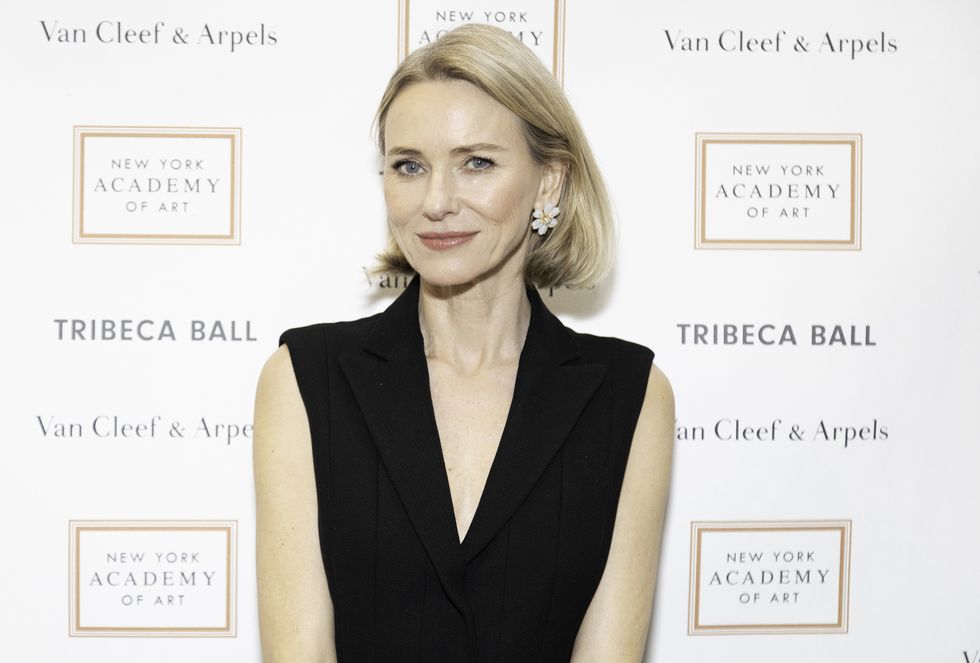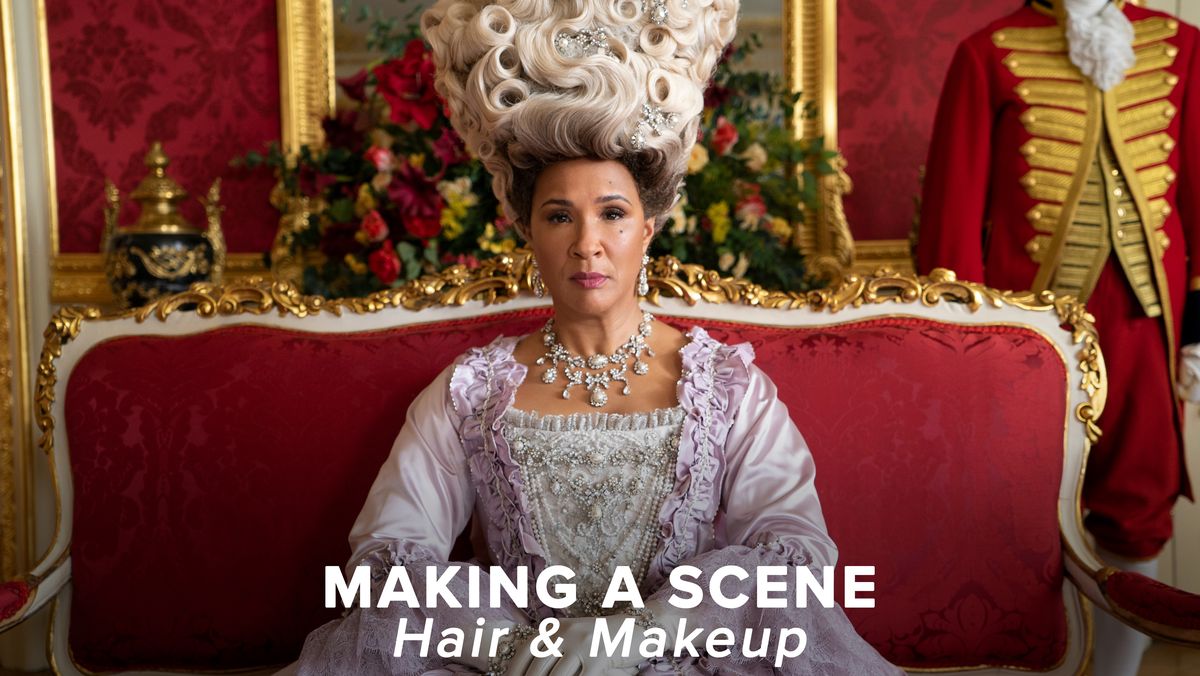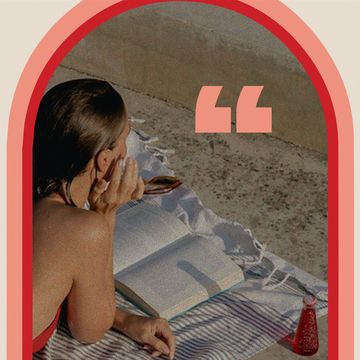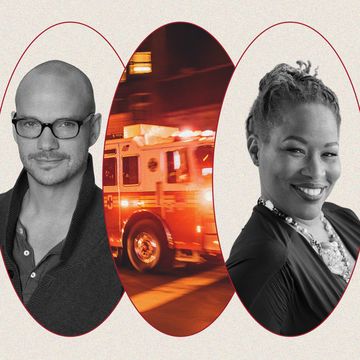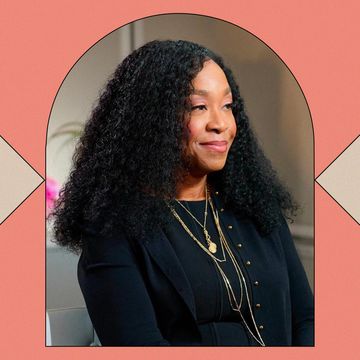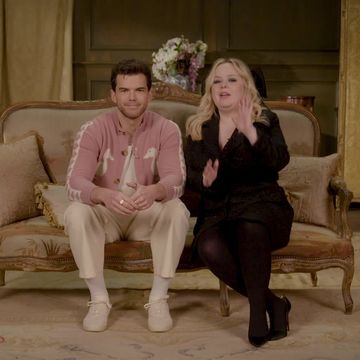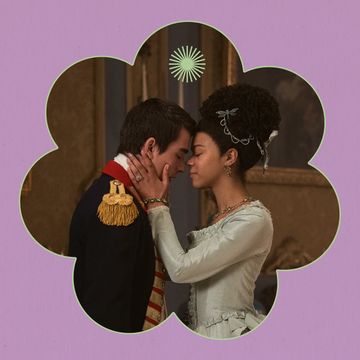The following interview was conducted prior to the SAG-AFTRA strike authorization.
In 2004, Naomi Watts was one of Hollywood’s biggest stars, thanks to critically acclaimed turns in the films Mulholland Drive, The Ring, and 21 Grams (which earned her an Oscar nomination for Best Actress). And yet behind the scenes, the then-36-year-old was dealing with deeply personal challenges.
“I was right at the precipice of wanting to start a family and confused as to why I wasn’t getting pregnant,” she tells Shondaland. “A girlfriend suggested that I go to a doctor and get a blood panel, and the blood results suggested that I was close to menopause. I went into a complete panic. I did remember, as I left the office, that my mother had told me she’d gone into early menopause herself, but I had no other details around that.”
Though she was ultimately able to have children thanks to “numerous interventions,” once she stopped breastfeeding her second child, menopause fully kicked in. “I went straight into hardcore symptoms,” she says. “I was already, at 36, having erratic menstruation cycles. I was fully aware that my egg function was dissipating. Although my doctor was very empathetic, there was no real place to go. I felt very, very alone and isolated.”
It was memories of this time in her life that led Watts to create Stripes, a beauty and wellness brand specifically aimed to help menopausal women. Launched in 2022, the line includes cheekily named products (Dew as I Do, Resting Clean Face) that target a variety of issues stemming from menopause and perimenopause. In addition, the Stripes website is chock-full of expert advice and forums through which menopausal women can support one another. “Stripes came to me because I had felt so ill equipped,” she says. “If I had just had a place to go to feel a sense of community or to get educated, it would have been a lot more bearable.”
Watts says Stripes’ mission is “to destigmatize the conversation” around menopause. “We’re trying to have fun with it as well. If you look at the names of the products, they’re hopefully going to put a smile on your face. There’s some tongue in cheek there, like Full Monty for the body oil and Vag of Honor, because one should honor the vag. We’ve tried to be a bit punny and bold and irreverent. It’s just a way to access some awkwardness through this time by defusing it with humor. It’s not all doom and gloom.”
Of all the products, Watts says Vag of Honor, a vaginal moisturizer, is her favorite. “It’s kind of a lifesaver,” she says. “Vaginal dryness is one of the most taboo symptoms, if not the most taboo. There’s countless women out there whose marriages or relationships are suffering because they’re unaware of how to get support, both emotionally and through products, so this is a great solve for many women. We’ve had incredible feedback from it.”
The actress, whose most recent projects include Netflix’s The Watcher and the horror film Goodnight Mommy, recently spoke with Shondaland about product creation, the joy of launching a company, and Hollywood’s not-so-realistic portrayal of menopause.
SANDRA EBEJER: When I was growing up, menopause was portrayed as something that heralded the beginning of the end. You’ve said you named this brand Stripes because you want women to feel like they’ve earned their stripes. What is your message to those women who are just starting on this journey and are convinced their best years are behind them?
NAOMI WATTS: You know, we’re living so much longer, so why don’t we find a better way to endure this time? It’s going to happen to every woman at some point; get ahead of it by being educated. I think your mid-30s is the time to start understanding where your hormonal cycle is going. If anything, I actually think the story should be set in sixth grade in sex ed, when kids are told about getting people pregnant or getting STIs. The whole journey should be told. You don’t have to go into it in great detail, but the whole cycle [has] a beginning, a middle, and an end, and that piece was left out.
The reason we called it Stripes was to lean into this time, be honest, be open, put your hand up for help. It is a bit of a battlefield. It is something that’s tough to navigate, particularly the perimenopause stage, where everything’s in flux and up and down one minute to the next. But on the other side of it, things level out, and you get to reclaim yourself and live a long and healthy life. You should feel like you’ve earned those stripes. You should feel decorated in some way. Also, the name Stripes came to me because I liked the visual aspect of it. No stripe can live alone; we are a community, and we’re stronger as a community.
SE: Prior to Stripes, you co-founded Onda Beauty. What excites you about this kind of work? Have you always been interested in science and product creation?
NW: I sort of fell into Onda through my friends, but also led by menopausal symptoms. I certainly had no clue that skin was related to menopause. I knew of the obvious symptoms, like night sweats, hot flashes, brain fog, and mood swings. But I didn’t know skin became dry and itchy and angry and irritable. I’ve always had very sensitive skin, and I was working on a TV show at the time, working 12-to-16-hour days with multiple applications of makeup, and my skin was just not having it. I didn’t understand what was happening. I would go to the doctor and get an ointment, which was a Band-Aid fix, but nothing was solving the problem. So, my friends who had created Onda — which had like 70 or 80 different brands, all with gentle, less harmful ingredients — gave me products, and very quickly I saw a change in my skin.
Then I became passionate about ingredients, and that led to Stripes because I felt a little bit frustrated with some of the brands. Although they were efficacious and beautiful brands, I felt like I want to be spoken to directly with these symptoms that I’m experiencing. I don’t want to be told I can look like a 28-year-old anymore, because that’s a promise that can’t be fulfilled [laughs]. Nor do I want to look like a 28-year-old! I wanted to create a brand that was really targeting these symptoms. I needed something [with] ingredients that were really addressing the harshness of what my skin was reacting to. I needed something that was not just soothing but deeply hydrating. My skin was just too sensitive, and things I could handle before, like retinol, suddenly I couldn’t. They just became too harsh, and my skin would dry out even more.
SE: How did you go about choosing the biotech company Amyris as a partner? And how much of a role do you play in ensuring that the products are clean and backed by science?
NW: I’m not a scientist, but I talk to them all the time and explain what I have learned and what my needs are, and I’m not unique. So, we work through formulations. For instance, the cleanser — the first iteration was too stripping. With too much foam, you’re going to have to wipe it off or risk taking layers off your skin. So, something that can be splashed off [is better]. And we have retinoids in our evening cream, which are much gentler than retinol. Amyris has already been working with [the ingredient] squalane for a long time now, but we paired it with an ingredient called ectoine, which is a molecule that we created that can exist and live in the harshest environments, like at the bottom of the volcano or a really dry atmosphere. It can target exactly where the dry spots are and bring moisture. And then, the squalane locks it in and strengthens the skin barrier.
Amyris was really a big draw for me because of their science. I knew they’d been supplying ingredients for multiple different brands for a while. I also knew that they were in a building phase of wanting to create brands from the ground up. So, it was a big draw for me because I also have a very active day job. I’m still very invested in being an actor and love what I do. So, I liked that I could join forces with them and they had the infrastructure to move quickly in terms of marketing as well as creating the formulations.
SE: Launching a company is hard work, and you’ve done it more than once. What have you learned about yourself during the process of creating these companies?
NW: It’s another version of storytelling, in a way. Obviously, it’s a lot more personal, this [menopause] story that I’m sharing. But as risky as it was to start this conversation, given the field that I’m already in, I felt it was necessary. I want to bring people together. And just like in acting and storytelling, what we do is, hopefully, tell a story that reflects your own, and you’re able to experience it in your own way. So, this kind of felt like another version of that. As risky as it was, it felt worthwhile.
SE: I imagine that you’ve gotten a lot of great feedback from people who are welcoming everything you’re sharing about yourself and your journey.
NW: Yes. It’s amazing, actually. A lot of the time, people stop me and say, “Oh, I recognize you, but what are you in?” [Laughs.] And I’m usually like, “Okay, I’ll get ready to recite my résumé …” But people lately have been saying, “I just want to tell you, you’re making such a difference. I had the conversation with my husband I’ve been dreading to have, and my kids finally get it.” And that is so gratifying to me that there’s been a tiny bit of difference made in a few people’s households. That’s everything to me.
SE: Given your work as an actress, I tried to think of times I’ve seen menopause portrayed realistically in pop culture. There aren’t a lot of examples.
NW: Yeah, I know. It’s always the crazy, old crone.
SE: Do you think the entertainment industry will ever be open to portraying this stage of life in an honest and realistic way?
NW: I do, actually. I think the entertainment industry gets a lot of flak for wrongdoings, but ultimately I think it’s a progressive industry, and we are capable of addressing issues and creating change. When I entered Hollywood, I was told, “It’s all going to be finished by the time you’re 40, so you better get moving.” That pretty much put the fear of God in me. But now I’m looking around, and there’s multiple people who are playing leading ladies in not just their 40s, but 50s. So, I think change has already occurred, and I think more will take place. I feel like everyone’s interested in longevity right now and wanting to live healthier, longer, better lives. Aging is trending.
SE: You’ve co-hosted two menopause symposiums over the past year and have sat on panels alongside experts in all areas of women’s health. Have you learned of any new advancements that excite you?
NW: Just that conversation is available now. That’s such a huge change to how it was in previous generations. I think we’re the last generation [for which] it will be a taboo subject, and that is fantastic. I think doctors now are training in it and specializing in it. Actually, on one of those panels, someone went round and asked each of the endocrinologists or gynecologists how long they had been trained in menopause, and the numbers were shockingly low. Sometimes these doctors were having to pay extra just to get a couple of weeks’ worth of training. It’s absurd. So, just that is a massive change, and very exciting news, I would say.
SE: From personal experience, I can say it really is shocking how few medical professionals have knowledge in this area. What advice do you have for women who are experiencing symptoms of menopause or perimenopause but aren’t getting the help or the information they need?
NW: Don’t be afraid to talk to your friends, because everyone’s headed there. The timing may be different, but who knows? You might run into someone who is early as well. That’s why I was afraid to talk about it, especially as an actress playing leading ladies. I thought, “My God, if I identify as [menopausal] in any way, I’m going to be thought of as nothing but unsexy and finished.” It’s absurd. So, gently ask the questions with your friends first, and then your doctor. And if your doctor is closed to it, change providers. I think there’s enough places to go now. Also, now we know that HRT is safe and we don’t have to fear it. If it’s safe for you, you should absolutely explore that. There’s no reason anyone should suffer alone through their symptoms.
SE: Stripes is a wellness brand, but the website includes more than just products. There are articles and an online community. What is your goal for Stripes beyond product sales? What do you want women to get out of it?
NW: I want them to feel empowered and better set up. It wasn’t just about products; it was about creating education and community as well. Like I said before, if I’d had somewhere to go to feel like I was part of something, I would have felt so much more capable of moving through it. The doubt and the fear and anxiety all on your own is too much to bear in any kind of crisis, and that’s what it felt like. It really did feel like I was losing my mind. So yeah, come to Stripes. We have Menoguides, which offer education. We have the Hot Spot for community and Adulted, which [has] expert-driven advice. We’ve got people on our board advising us all the time; we’re on top of current research. So, I hope they get as much out of it as they need.
This interview has been edited for clarity and length.
Sandra Ebejer is a New York-based writer who has contributed to The Boston Globe, The Washington Post, Greatist, Flood Magazine, and The Girlfriend from AARP. Find her on Twitter @sebejer.
Get Shondaland directly in your inbox: SUBSCRIBE TODAY
